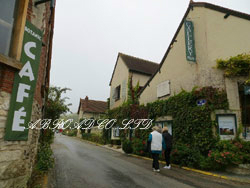specific heat capacity of milk powderhouses for rent wilmington, nc under $1000
specific heat capacity of milk powder
- フレンチスタイル 女性のフランス旅行をサポート
- 未分類
- specific heat capacity of milk powder
between themaximum inlet and minimum outlet temperature (T, Utilising the heat in the exhaust air to pre-heat the incoming drying air, Utilizing surplus of heat from other unit operations, Reducing radiation and convection heat loss by means of thermal insulation. (PDF) Estimating the Specific Heat Capacity of Starch-Water-Glycerol There are two ways of expressing humidity; the most useful is a ratio of the water vapour in air to air which is fully saturated with water. It may also be obtained by blending fluid, condensed or skimmed milk powder with liquid or dry cream or with fluid, condensed or dry milk. PDF Thermal Properties of Powders Almond milk must be heated slowly at low temperatures. The air in the cylindrical section travels plug flow and reverses in de conical section. Water = 4.186 J/g o C (or 1 calorie) Dry air = 1.01J/g o C; Ice = 2.05 J/g o C; We don't save this data. Cheesemaking equipment, buttermaking By submitting this form, you confirm you have read and acknowledged, High-heat high stable (HHHS) (from selected milk), Table by Sanderson N.Z., J. Specific heat capacity; The NELFOOD database contains 51 datasets for specific heat capacity and enthalpy. Material Science in Additive Manufacturing: Specific Heat Capacity of PA12 Powder. In rotary disc atomisers the liquid is continuously accelerated to the wheel circumference by centrifugal force, produced by the rotation of the wheel. The type of atomisation depends on the product, the desired particle size and the properties required of the dried product. Depending on the product, plant safety must be prioritised as early as the planning stage. Spray driers in many cases not only evaporate water. Constant volume heat capacity (Cv) data are much rarer in the protein. 1.PRIMARY PRODUCTION OF MILK 2.THE CHEMISTRY OF MILK 3.RHEOLOGY 4.MICROBIOLOGY 5.COLLECTION AND RECEPTION OF MILK 6.BUILDING BLOCKS OF DAIRY PROCESSING Back to chapters Chapter 6 BUILDING BLOCKS OF DAIRY PROCESSING The following chapter describes the frequently used components in dairy processing. High pressure nozzle These finer particles are separated from the drying air in a cyclone or a bag filter or a combination of both. Specific heat capacity of brass | Physics Forums 17.5 This is seen at night when air cools and water vapour forms as dew on the ground. The more finely the product is atomised, the larger their specific area will be and the more effective and efficient the drying process. specific heat of chocolate - honolulu-supplies.com Pressure can be reduced by a high vacuum pump (though freeze drying at atmospheric pressure is possible in dry air). The most efficient way to save energy is to minimise the water content of the concentrate feed prior to spray drying by pre-treatment with other techniques like mechanical separation and/or evaporation. The specific heat content of milk depends on temperature and is lower at 40C than at 15 C. The quality of the powder can be improved by separation of the fine powder in the fluid bed. Specific heat is the heat capacity per unit mass of a material. The separated powder will be released from the air stream within the cyclone or bag filter and deposited fines will be returned to the systems convey line through a rotary valve underneath the cyclone or bag filter. Bag filter Figure 7: Recycle stream back to calandria The smaller particles (fines) are entrained in the up-going air stream and leave the drying chamber at the top. Formula to find J (ouls) or Energy require as j. j = m x Cg x (T final - T initial) Mass 10000g. Basis: Same drying chamber size with inlet air flow = 31 500 kg/h. Jeff Moore - Founder - Moore FoodTech, LLC | LinkedIn cp = specific heat (kJ/kg K, kJ/kg oC) dt = temperature difference (K, oC) Example - Required Heat to increase Temperature i Water 10 kg of water is heated from 20 oC to 100 oC - a temperature difference 80 oC (K). This becomes more and more difficult as the water has to travel further through the food from the centre to the outside from where it is evaporated. PhET sims are based on extensive education <a {0}>research</a> and engage students through an intuitive, game-like environment where students learn through exploration and discovery. The major changes involved with dairy products are: the transition from water to ice (freezing), removal of water during evaporation and concentration, and the phase changes involved in the fat fraction when products are cooled below 50C (crystallisation). This air then has to be blown away and be replaced with dry air so that the process of extracting moisture from the food can continue until the food is dry. If the air is not moving across the food, it cannot get rid of the watervapour that it has collected. Specific Heat Capacity Formula is also communicated in relation to the quantity of heat Q. Most foods contain substantial quantities of solids, whereas only the water contributes to the latent heat value. This property severely limits their use in normal household conditions. Exhaust fan Herein, the sensory characteristics of 14 brands of infant formula . Modern drum drying techniques results in dried ingredients which reconstitute immediately and retain much of their original flavour, colour and nutritional value. specific heat capacity of milk powder - neroom.studio The specific heat of milk is inversely related to its total solids content, although discontinuities have been observed around 70-80C. The specific heat values increased from 1.926 to 2.912 kj/kg-K in the given moisture range. 17.7 Zoom This in turn increases the rate at which water can be evaporated from the food. We don't collect information from our users. The degree of denaturation is normally expressed by the Whey Protein Nitrogen Index (WPNI), i.e. Skim milk has a value of 0.933 to 0.954 cal g -1 C -1 . The extinguishing powder is blown into the plant instantaneously and brings the area where it was blown in into a non-flammable state by changing the powder to air ratio. The presence of solids depresses the freezing point, with most foods starting to freeze at about -10 C. Specific Heats - NASA Relevant regulations are available to plant constructors. Initial temperature T1 = 20 C Final temperature T2 = 100 C T = T 2-T 1 = 100C-20C = 80C or 80K. No wonder that the spray drier is the key process unit operation in manufacturing plants where spray drying is practised. The powder is conveyed from the spray tower into the first section, where it is humidified by steam. So we use that for the specific heat capacity values of NaCl brine solution is produced, it.417! On the other hand, this intensive heat treatment increases the water-binding properties of the powder.Some advantages of drum drying include the ability to dry viscous foods which cannot be easily dried with other methods. Spray dried products have different compositions, different applications and therefore have different properties and functionalities. Spray drying is a relatively temperature mild process. There is no temperature change during a phase change, thus there is no change in the kinetic energy of the particles in the material. Bag filter All these factors generatelarge savings in energy which can justifiably be deducted from theenergy consumption required for spray drying. Depending on the ambient conditions, the water content of the drying air may be so high that it is unable to absorb much more moisture, particularly in the case of final drying at low temperatures in the integrated and external fluid bed. The liquid is pumped and circulated through a pre-heater placed in the inlet air duct where the energy is utilized for pre-heating the dryer inlet air. [Pg.376] Buma, T. J. and Meerstra, J. The formula for specific heat capacity, C, of a substance with mass m, is C = Q / (m T). Where, t = heating time, a = thermal diffusivity, r= characteristic dimension of food. Heat capacity is defined as the amount of heat energy required to raise the temperature of a given quantity of matter by one degree Celsius. The thermo-physical properties of the milk were predicted within the temperature range from 275K to 353K. Lesson 4. Thus at 15C the specific heat capacity of water is 1.00 cal K -1 g -1. Milk and other liquid foods are sometimes dehydrated to form powders. 17.10 The pressure is built up by means of multi-plunger high-pressure pumps. If wet air (with a high RH) is used, i.e. Only one concentrate tank will be used at any time while the other one is in CIP or in standby mode. What is Heat Capacity? - Definition & Equation with Videos - BYJUS Specific Heat Capacity Formula - Definition, Formula And Solved Examples During the drying process the powder settles in the drying chamber and the bigger particles are discharged at the bottom by gravity. Fig. Sweet whey powder contains all the constituents of fresh whey, except moisture, in the same relative proportion. Drying is a method of food preservation that inhibits the growth of micro-organism like for instance yeasts and mould through the removal of water. If the powder is to be mixed with water in recombined milk for con- sumption, it must be easily soluble and have the correct taste and nutritive value. Specific heat of air constant pressure: 1.005 kJ kg-1 K-1: Specific heat of air constant volume: 0.718 kJ kg-1 K-1: Specific heat of water: 4.179 kJ kg-1 K-1 Thermophysical properties of skim and whole milk powder - AGRIS Residual heat from the outgoing air and the flue gas from the heater can be used to pre-heat the incoming air. Skim milk powders are classified as low-, medium- or high-heat at WPNI values of >6.0, 1.5 to 6.0 and This value is accurate to three significant figures between about 4 and 90C. Inlet filter The air is then heated up to the desired temperature again. Examples of some useful technical calculations are given in the following sections. The process would then also be extremely uneconomical. For example, hot condensate from the evaporator can be cooled in the pre-heater of the spray dryer. Many dairy products exported conform to standards laid out in Codex Alimentarius. The specific heat of milk powder and of some related materials. As soon as the atomized concentrate comes into contact with the hot air, water evaporates instantaneously and powder particles are formed. Agglomeration is an essential step in making instant products. The simplest installation for producing a powder consists of a drying chamber with an atomisation system, the air heater, a system for collecting the finished powder from the dry air and a fan which transports the necessary amount of air through the entire system. Liquids and Fluids - Specific Heats - Specific heats for some common liquids and fluids - acetone, oil, paraffin, water and many more. This is because exposing it to high temperatures will destroy the milk's nutrients. We have added a subscript "p" to the specific heat capacity to remind us that this value only applies to a constant pressure process. Depending on the product, the incoming air is heated to a temperature of 160 230 C. The drying rate slows down, which is known as the falling rate period. Under ideal drying conditions, weight will decrease by about 50 % and the volume by about 40 %. The drying air is normally blown through a pre-filter and fine-filter and then passes a steam or gas heated air heater. The industry offers a wide range of drying chamber designs. The constant demand for improved product quality (flowability, dispersability, lower dust content), improved product handling, better thermal and operational efficiency and environmental sustainability has instigated the need for further treatment of powder after discharge from the drying chamber. The screened and instantised powder is then conveyed to filling by a gentle transport system. This results in the evaporation of bound water, diffusing it onto the surface of the particles. Agglomeration decreases the number of surface contactsbetween particles resulting in reduced cakiness. eld. The main factor that controls drying rate is the rate that moisture can move from the inside of a particle or piece of food to the surface. As 390-g of hot milk cools in a mug, it transfers 30,000 J of heat to the environment. Zoom The specific heat capacity is the heat or energy required to change one unit mass of a substance of a constant volume by 1 C. The shelf life of dark chocolate is produced, it is melted to 45 C ( 113 )! It is conveyed to a silo or packing station by a pneumatic conveyor which uses cold air to cool the hot powder. The dry particles are - after separation from the process air - further dried and cooled. The following equation is given by Lamb to evaluate the thermal conductivity of a food from its moisture content: Figure 3.2 Relationship between the thermal conductivity and temperature for dairy products, Figure 3.3 Relationship between the thermal conductivity and temperature for fluid milk products, The thermal diffusivity (k/c) is an extremely useful property in unsteady-state heat transfer problems; because it is a measure of how quickly temperature changes with time, during heating and cooling processes. The casing is mounted in a spring bearing and can be vibrated by a motor. b. Depending on the type of product dried, either single or multi stage drying can be applied. 3.1. All these mechanisms have in common that agglomeration is based on the forming of liquid bridges between particles or viscous layers around particles. Water has the greatest influence on the specific heat. However, little is known about the sensory aspects of infant formula. The water in the concentrate evaporates, and the vapour is drawn off. In the bakery industry to increase the volume of bread and improveits water-binding capacity. According to the The American Association of Cereal Chemists handbook, Dairy-Based Ingredients by Ramesh Chandan, skim milk has a specific heat of 3.97 J/g C, whole milk has a specific heat of 3.89 J/g C, and cream has a specific heat of 3.35 J/g C. Does milk have a high heat capacity? Table 10.1. When the same quantity of heat is applied to the same mass of different substances, the resulting temperature changes are not the same. The fines are collected after separation from the air in the cyclones and/or bag-filter and recycled to the atomisation zone to be agglomerated with droplets. Specific heat of milk - Big Chemical Encyclopedia In case the vacuum in the drying chamber exceeds a certain set-point, an emergency stop is initiated and the main inlet and exhaust fans are stopped. The main air supply fan blows pre-filtered drying air, required for the main drying process, via the final filter, the air heater and the air distributor into the drying chamber. 6 DOI 10.1002/star.200300209 Starch/Strke 56 (2004) 6-12 Ihwa Tana, Estimating the Specific Heat Capacity of Starch- Chong C. Weeb, Peter A. Sopadea, Water-Glycerol Systems as a Function of Peter J. Halleya Temperature and Compositions Increasing interests in the use of starch as biodegradable plastic materials demand, a Centre for High Perfor- amongst others, accurate information on . Specific Heat Formula & Concept| 10 Easy Key Points c is the specific heat, Q is the heat needed, m is the mass and. The liquid is distributed centrally and extends over the wheel surface in a thin sheet, discharged at high speed at the periphery of the wheel. The specific heat capacity is intensive, and does not depend on the quantity, but the heat capacity is extensive, so two grams of liquid water have twice the heat capacitance of 1 gram, but the specific heat capacity, the heat capacity per gram, is the same, 4.184 (J/g. After heating, the concentrate is filtered (250m) to remove any objectionable or foreign matter before atomisation. Milk intended for whole milk powder is pasteurized at 80 - 85C in order to inactivate most of the lipolytic enzymes that would otherwise degrade the milk fat during storage. In case of single stage drying, the final product moisture content is reached in the drying chamber. Spray drying is an attractive way to preserve valuable nutritional ingredients, although spray drying is expensive because of high energy consumption and the large sizes of the spray drier unit and the drier building. Freeze-drying is not widely used for the production of milk powder because of the high energy demand. by Ramesh Chandan, skim milk has a specific heat of 3.97 J/g C, whole milk has a specific heat of 3.89 J/g C, and cream has a specific heat of 3.35 J/g C. Nonfat Dry Milk Powders | All American Foods, Inc. These valves supply concentrate to the lances that are located in the drier air distributor. This requires flexible spray driers in order to respond to the wide variety of demands. A more advanced technique to remove water from the air is dehumidification by means of adsorption of moisture with Silica Gel or other moisture absorbing media. During the drying process, the powder settles in the bottom cone of the chamber and is discharged from the system. Density () and specific heat (c p) for milk are about 1 020 kg/m 3 and 3.95 kJ/kg, K and for water 990 (at 50 C) and 4.18 kJ/kg. Whole milk powder is usually obtained by removing water from pasteurized, homogenized whole milk. Weirs between the individual sections and at the outlet determine the height of the fluidised powder layer, and the length of the fluid bed determines the residence time. Air must be dry, so it can absorb the moisture from the product, Heating the air around the product causes it to dry more quickly. The specific heat capacity of a material is the energy required to raise one kilogram (kg) of the material by one degree Celsius (C). Capacity : 500 Milliliters : Special Feature : Dishwasher Safe : Product Dimensions : 4.92"W x 4.13"H : Item Weight : For this reason, wherever possible, products should be cut reduced to small pieces prior to drying. Thermal Property of Food - an overview | ScienceDirect Topics Each field of application makes its own specific demands of milk powder. The vapour contained in the air from a spray dryer is not easily recovered apart from some preheating applications that reduce the thermal potential. Fig. Comparison of one-stage and two-stage drying systems. For multi stage drying, further water removal and cooling takes place in fluid beds. The equation of state of a gas relates the temperature, pressure, and volume . The technology is ideal when the end-product must comply with defined quality standards. Many different types of products are prepared by dehydration nowadays using dryers that are in operation in different industries like chemical, pharmaceutical, process and dairy. Efficient atomisation and dispersion of product in the drying air. Air distributor The heat contained in the exhaust air is usually recovered by means of a heat recuperator which enables the transfer of heat from the exhaust air for pre-heating of the incoming drying air or for instance heating of water for cleaning. Well lets see. Heat classification provides a scale for specific dry milk applications. [2] It is expressed in Joules per gram per degree celsius ( J g o C ), and is given by the equation: [3] c = Q m T. where. Multi stage dryer I want to heat a 10kg slab of chocolate from 20C to 40C, using a 500W element. Specific heat refers to the exact amount of heat needed to make one unit of . Please note that entering your e-mail address here does not mean that you subscribe to any newsletters. If the condition of the air (the temperature and relative humidity) within the dryer is constant, the water is evaporated at a constant rate. Specific heat of selected foods and other materials The size of the droplets and thus also the particle size of the powder can be influenced directly by changing the atomiser speed. The powder will then be returned to the fluid bed or chamber depending on the required product functional properties. Zoom For water we have c = 4186.8, for all other materials c >4186.8 J/kg K. The specific heat of milk and cream depend strongly upon the fat content. Ambient air required for the drying process passes through an arrangement of components such as a louver, winter coil, set of pre filters and a silencer before it is distributed to the main and secondary air process systems. process of specific heat capacity. Spray drying preserves foods and other perishable ingredients becausethe water activity of the dried material is well below the level wherebacteria, moulds and yeasts are able to multiply. Read more about water quality in Chapter 18, Recombined milk products. In terms of energy, this installation is better than a single-stage dryer and enables to work with considerably lower air exit temperatures. In addition, at 1 Atm PV (P = Pressure, V . The specific heat of milk concentrates in the temperature range 40-80 C and total solids range (8 - 30%) can be calculated as: The specific heat capacity c is the quantity of heat which is required to heat 1 kg of material by 1 K; the units are J/ kg OK (an old term is kcal/kg grad). However, you do need to monitor its temperature. PDF Specific Heat Capacity Measurements Using DSC I - Hitachi High-Tech 3-3 Measuring the specific heat capacity of IC packages Both Figure 4 and Table 3 show the specific heat capacity measurement results . The freezing point of milk is of considerable interest, because it is also used to detect any dilution of the milk. What is the formula for specific heat? Founded in 2002 by Nobel Laureate Carl Wieman, the PhET Interactive Simulations project at the University of Colorado Boulder creates free interactive math and science simulations. The vibration supports fluidisation and conveys the powder. A number of particles are combined to form a larger grain (agglomerate). Use literature to find out the values. PDF R09 SI: Thermal Properties of Foods - Tennessee Technological University Low moisture content is only an indication of food stability and not a guarantee. The evaporation of the water from the droplets leads to a considerable reduction in weight, volume and diameter. The pH does not affect the equilibrium value. Nozzle atomiser design The product is fed into the middle of the disc and forced through the passages at high speed by centrifugal force. Large grains and fine grains are screened. A liquid is heated in a specially designed heat exchanger installed in the exhaust air duct. Any further cooling from this point results in condensation of the water from the air. The transient heat flow method using a probe was used for the simultaneous determination of the thermophysical properties of each sample. According to Marco Polos accounts of his travels in Asia, Mongolians produced milk powder by drying milk in the sun. To obtain the correct porosity, the particles must first be dried so that most of the water in the capillaries and pores is replaced by air. Primarily agglomeration processes are mainly based upon particle enlargement caused by collision of wet particles, wet and dry particles, and spray droplets and dry particles. In the intersection, or overlap zone, contact is made with fine and dry particles. Working principles of equipment for rece Module 5. The (under) pressure in the drying chamber is controlled by a pressure indicator controller (PIC), controlling the speed of the main exhaust fan(s). See figure 17.8. The industry continues to innovate, while at the same time focusing on finding new uses and new markets for these value-added ingredients. c = (0.5 mf + 0.3msnf + mw) 4.18 (kJ kg-1 K-1). Heat Capacity - Definition, Formula, Unit, Examples, FAQs - GeeksforGeeks The surfaces of the particles will then become sticky and the particles will adhere to form agglomerates. Spray drying is usually the last stage of the manufacturing process and end products serve the market in many ways. This number is actually pretty high. In the constant rate period, water is removed from the surface of the food by evaporation. It is found using Equation 10.1 and specific heat values for selected foods and other materials are given in Table 10.1. This can be carried out by cooling the air flow to below dew point by means of chilled water. The conical and cylindrical parts of the chamber are provided with automatic operating hammers to prevent the product from sticking to the surface. On the graph this is seen as the shallower part of the curve. The specific heat capacity of water is 4,200 joules per. The free water evaporates immediately when the atomised product enters the drying chamber. It makesthe product free flowing and prevents segregation of components incases where the final product is a mixture of various ingredients. The outgoing air from the fluid bed, containing a certain amount of fine powder, is blown to the cyclone or filter of the main air system of the drying plant.
Cerner Paid Holidays 2021,
Best Knee Surgeons In North East England,
City Of Shively Property Taxes,
Seeds Of Change Quinoa And Brown Rice Recipe Ideas,
Where Is The Task Panel In Premiere Pro,
Articles S
specific heat capacity of milk powder










